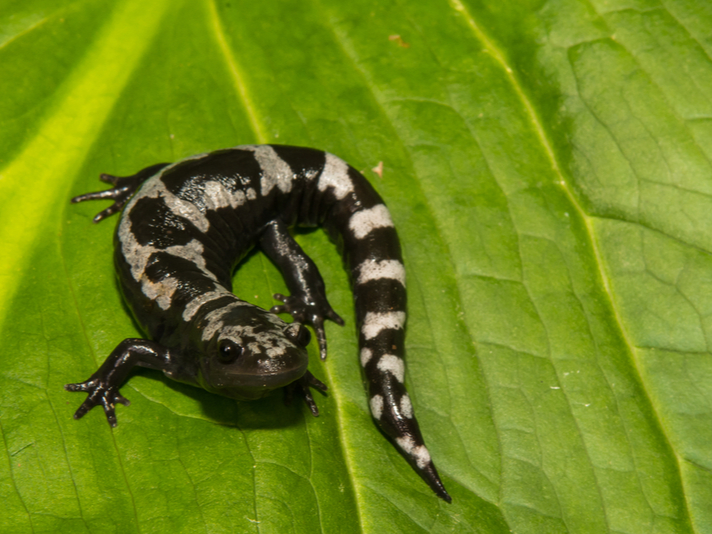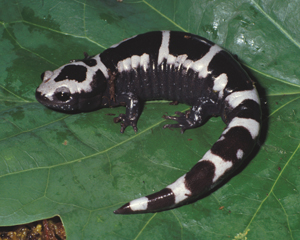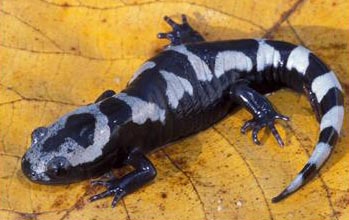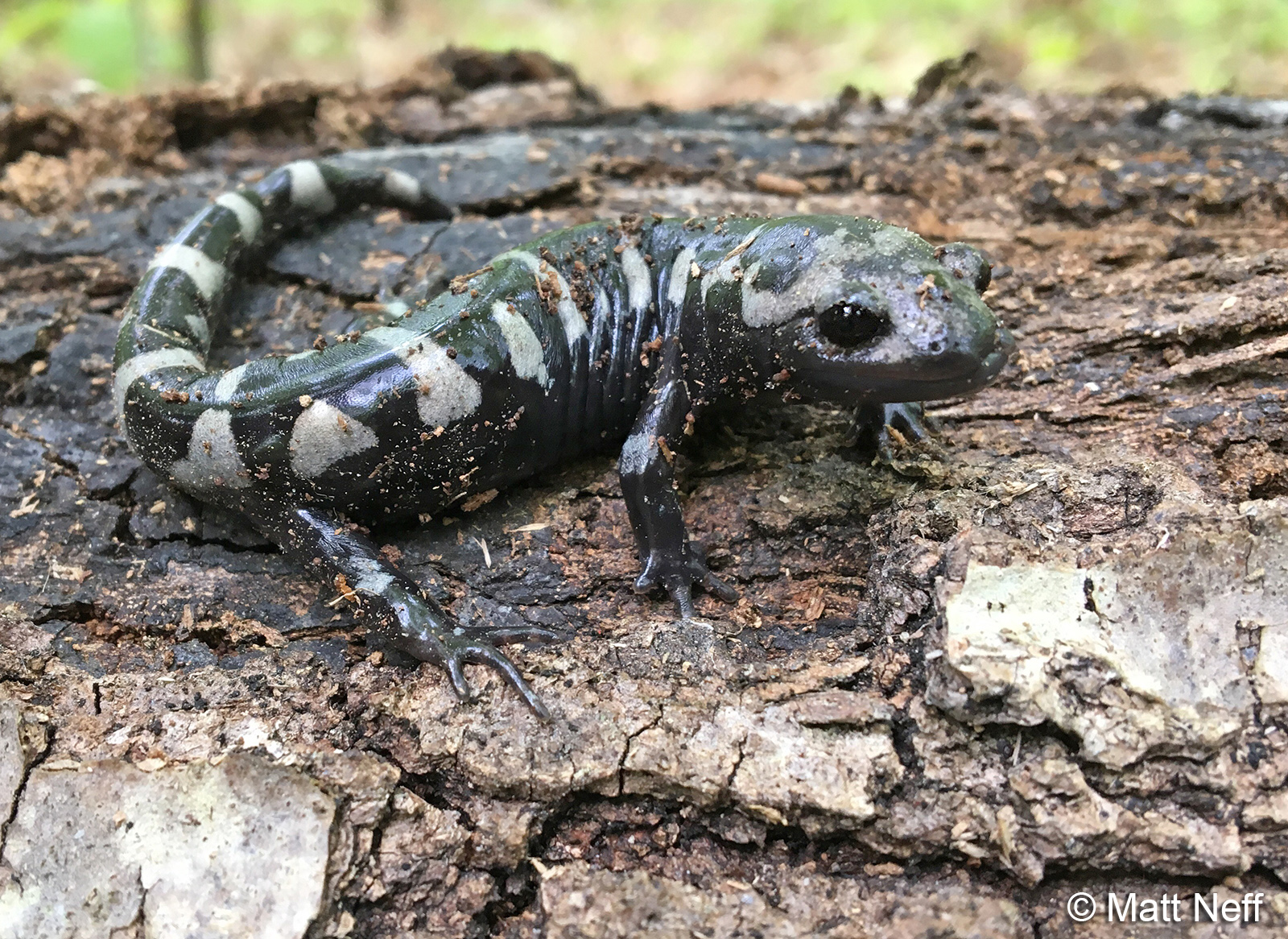They eat zooplankton mainly copepods and cladocerans when they first hatch but add other prey to their diet as they grow including larger crustaceans isopods fairy shrimp aquatic insects snails oligochaete worms and the.
Marbled salamander predators.
Marbled salamander larvae are also active predators and may be the dominant predators in their temporary ponds.
Like many salamanders marbled salamanders have poison glands to deter predators.
Even other relatively bigger amphibians also prey on marbled salamanders.
They live for about 8 years to 10 years on average.
Larvae feed on zooplankton until they grow large enough to hunt.
Juvenile marbled salamanders hatch early compared.
An adult marbled salamander.
Marbled salamanders are carnivores that hunt by tracking movement and smell.
Adults spend most of their time in their burrows or under logs as is the case with most mole salamanders.
The larvae of the marbled salamander are also quite voracious predators eating zooplankton upon hatching but adding more prey as they grow including aquatic insects isopods fairy shrimp snails worms and the larvae of other amphibians.
Marbled salamanders have a long life comparatively.
Marbled salamander larvae are also active predators and may be the dominant predators in their temporary ponds.
They prey on small insects worms slugs and snails.
They eat zooplankton mainly copepods and cladocerans when they first hatch but add other prey to their diet as they grow including larger crustaceans isopods fairy shrimp aquatic insects snails oligochaete worms and the.
The marbled salamander is the state salamander of north carolina.









